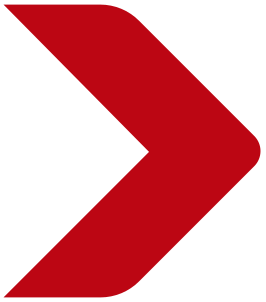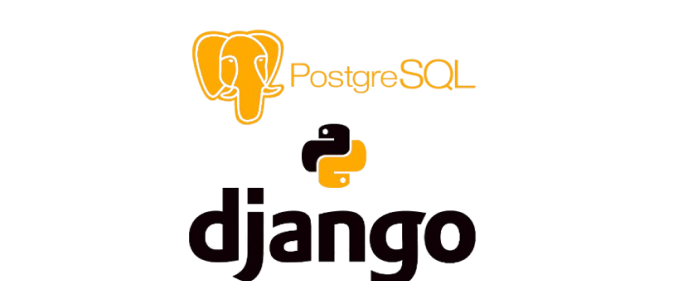
In today’s fast-paced tech world, picking the right tools and technologies for your project is more important than ever. As we are approaching the end of 2024 with exciting advancements in AI, cloud computing, and more, the world of technology is changing quickly.
At the core of every successful software project is the right technology stack. A software project is an organized approach to developing and maintaining software solutions tailored to specific needs.
The right technology stack serves as the backbone of your software project. It influences everything from the speed of development and the user experience to the ease of integration and long-term maintainability. The importance of a well-chosen tech stack in a software project cannot be overstated.
Choosing the right technology stack now isn’t just about keeping up. It’s about setting your project up for long-term success in a competitive and ever-evolving environment.
This guide is designed to help you go through the process of choosing a tech stack by focusing on the key factors you should consider when selecting the right technologies for your software project.
Whether you’re a software development company or an individual developer, the choices you make here will be crucial. Further in the blog, we’ll cover what a technology stack is, the different types of tech stacks, why choosing the right one is so important, the entire process of choosing the right technology stack and much more.
Understanding the basics of a technology stack is essential for building and maintaining successful software applications.
A technology stack is a set of tools and technologies used to create and run software applications. It includes everything from the parts of a website or app that users interact with to the systems that operate behind the scenes.
Frontend:This is the part of the software that users see and interact with, like the design and layout.
Backend:The backend handles the processes that users don’t see, such as servers and databases.
Mobile:For mobile apps, this includes the tools used to build apps for iOS and Android.
Database:This is where the application stores and retrieves data.
DevOps:These are the tools and methods used to deploy, manage, and maintain the application.
There are different types of technology stacks, each tailored to specific needs and applications, whether for web, mobile, or software development.

The frontend tech stack is what users see and interact with on a screen. It focuses on creating a great user experience, smooth interface, and easy navigation. In other words, it’s responsible for the design, layout, and how users move around a website or web app.
The frontend stack consists of three main parts:
HTML (Hypertext Markup Language):This is the basic structure of web pages, organizing and displaying content.
CSS (Cascading Style Sheets):CSS styles and formats the content, controlling things like fonts, colors, and layout. Developers often use frameworks like SASS and LESS to make CSS easier to manage.
JavaScript:This programming language adds interactivity to web pages, enabling useful features. Popular libraries and frameworks like jQuery, React, Angular, and Vue help in creating these features. Many developers also use TypeScript, an advanced version of JavaScript, in modern applications
The backend technology stack refers to the server-side components of a software application, handling data processing, server management, and communication between the server and the frontend. It’s responsible for the functionality that users don’t see but relies on to interact with a web or mobile application.
Node.js:A JavaScript runtime that allows developers to build server-side applications with JavaScript, known for its speed and scalability.
Python:A versatile programming language popular for its readability and ease of use, often used for web development, data analysis, and automation.
Ruby:Known for its simplicity and productivity, Ruby is used to build backend systems and is the language behind the popular Ruby on Rails framework.
Django:A high-level Python framework that encourages rapid development and clean, pragmatic design.
Express.js:A minimalist framework for Node.js, providing a straightforward way to build web applications and APIs.
Ruby on Rails:A powerful framework for Ruby that simplifies the development of web applications with its convention over configuration approach.
The mobile tech stack focuses on the tools and technologies used formobile application development. It involves frameworks and services that help developers create, deploy, and manage apps for platforms like iOS and Android.
Flutter:A toolkit from Google for building compiled applications for mobile, web, and desktop from a single codebase. It offers a set of pre-designed widgets and high performance.
Firebase:A suite of tools from Google that provides backend services such as real-time databases, authentication, and cloud storage, making it easier to develop and scale mobile apps.
Databases are crucial for storing and managing data in applications. They come in two main types: SQL and NoSQL.
SQL Databases:These are structured and use a fixed schema to organize data in tables with rows and columns. They are ideal for applications that require complex queries and transactions. Examples include:
MySQL:A popular open-source SQL database known for its reliability and ease of use.
PostgreSQL:Another powerful SQL database that supports advanced data types and performance optimization.
NoSQL Databases:These offer more flexibility and are designed to handle unstructured or semi-structured data. They are suitable for applications with rapidly changing data or where scalability is crucial. Examples include:
MongoDB:A widely-used NoSQL database that stores data in flexible, JSON-like documents.
Cassandra:A NoSQL database known for its high availability and scalability, often used in large-scale applications.
DevOps cultureemphasizes collaboration between development and operations teams to improve the efficiency and reliability of deploying and managing applications. The cloud tech stack and DevOps tools play a key role in this process.With a DevOps approach,custom application managementbecomes adaptable. This methodology supports rapid changes and iterations, while ensuring smooth integration across different platforms.
AWS (Amazon Web Services):A cloud platform offering a wide range of services, including computing power, storage, and databases.
Google Cloud:Provides cloud services and tools for computing, storage, and data analysis, with a focus on scalability and machine learning.
Docker:A platform that allows developers to package applications and their dependencies into containers, ensuring consistent environments across different stages of development and deployment.
Kubernetes:An open-source system for automating the deployment, scaling, and management of containerized applications, making it easier to manage complex deployments.
Magento:Magentois an open-source e-commerce platform that provides a flexible shopping cart system, along with control over the look, content, and functionality of an online store.
Odoo:Odoois an all-in-one management software that offers a range of business applications, including CRM, e-commerce, accounting, inventory, and project management.
Visual Studio Code:Visual Studio Code (VS Code) is a source code editor that helps developers quickly build, debug, and run code. It has a simplified interface that includes an explorer on the left to show files and folders, and an editor on the right to show the contents of open files.
Git:A distributed version control system that helps developers manage code changes, collaborate on projects, and track the history of changes.
Selenium:An open-source testing framework for web applications that allows testers to write scripts in various programming languages to automate browser actions.
Jenkins :An open-source automation tool that simplifies tasks such as building, testing, and deploying software. It assists developers in identifying and resolving defects in their codebase efficiently.
Choosing the right technology stack is crucial for the success and efficiency of your projects. A well-chosen stack integrates technologies efficiently, reducing errors and simplifying development.
Here’s why it matters and some tips for making the best choice:
Discover the most effective and trending tech stacks of 2024 that can power your projects with advanced tools and technologies.

The MEAN stack uses MongoDB, Express.js, AngularJS, and Node.js, all JavaScript-based, to simplify web development. MongoDB provides a flexible database, Express.js and Node.js manage the server side, and AngularJS creates visually stunning user interfaces. It’s popular for its ease of use and strong community support.

Similar to MEAN, the MERN stack replaces AngularJS with React, which is excellent for building interactive UIs. MongoDB, Express.js, and Node.js handle the database and server, making it ideal for responsive web applications.

The LAMP stack—Linux, Apache, MySQL, and PHP—remains a reliable choice for traditional web applications. Linux is the operating system, Apache is the web server, MySQL manages the database, and PHP handles server-side scripting. It’s known for its stability and extensive support.

Flutter, paired with Firebase, is perfect for building cross-platform mobile apps. Flutter lets you create apps for mobile, web, and desktop from one codebase, while Firebase offers backend services like real-time databases and authentication.

The Serverless stack uses cloud services like AWS Lambda and Google Cloud Functions to build applications without managing servers. This setup is great for scalable and flexible projects, allowing you to focus on code while the cloud provider handles the infrastructure.

JAMstack (JavaScript, APIs, and Markup) is a modern approach where websites are built with client-side JavaScript and APIs, served as static files for fast load times and security. It’s efficient for creating fast, secure sites and is often used with headless CMSs.

Combining Python, Django, and PostgreSQL offers a powerful stack for developing complex, data-driven web applications quickly. Python’s simplicity, Django’s features, and PostgreSQL’s reliability make it a favorite for efficient development.
Ensuring your technology stack aligns with your project’s goals and future needs to set your project up is necessary for long-term success.
Here are some tips for choosing your project’s technology stack.

Choose a tech stack that directly supports the specific goals and requirements of your project to ensure it meets your needs effectively. Make sure the technologies you select are well-suited to the functionality and performance expected from your project. A stack aligned with your objectives will simplify development and enhance project success.

Plan for future expansion by selecting a tech stack that can grow with your project. This can accommodate increased demands and new features. This foresight helps avoid costly overhauls later on and ensures that your tech stack can handle future updates and scaling without major issues.

Incorporate security considerations from the beginning to protect your project from potential vulnerabilities and threats. Ensuring security measures in your technology stack helps safeguard sensitive data and maintain user trust, preventing security breaches and compliance issues.

Opt for tools and technologies that simplify development processes, especially if time-to-market is a critical factor. Choosing tools that support rapid development and testing can significantly reduce the time needed to launch your project.

Select technologies that align with your team’s existing skills to leverage their strengths and enhance productivity. Familiarity with the chosen tools reduces the learning curve and allows your team to work more efficiently, leading to faster project completion.

Consider the costs of maintaining and supporting the tech stack over time to ensure it remains feasible and sustainable. Factor in both direct expenses, like licensing fees, and indirect costs, such as training and support, to avoid unexpected financial strains.

Choose technologies that integrate smoothly with your current systems and infrastructure to avoid compatibility issues. Proper integration reduces the risk of technical conflicts and ensures a cohesive ecosystem that supports efficient operations and data flow.
Choosing the right technology stack is like setting the foundation for a building. You need to get it right, and everything else falls into place naturally. In today’s tech world, aligning your technology stack with your project’s needs ensures smooth development, performance, and long-term success. By considering factors like scalability, security, team expertise, and budget, you set your project up for growth and efficiency.For example, the usage of AI has seen a huge rise various sectors including AI in e-commerce and tech industry and hence selecting the right technology stack also means utilizing AI-driven tools that can enhance customer experience, optimize operations, and provide data-driven insights.
Whether you’re building a powerful mobile platform or on-demand delivery apps, selecting the right technologies will not only simplify your workflow and workload distribution but turn time into revenue and also enhance your project’s impact.
Dive in with confidence, knowing that your technology stack choice is a step towards a successful and thriving project.
Choosing the wrong tech stack can lead to performance issues, integration problems, higher costs, and maintenance difficulties, as the technologies might not scale well or be compatible with other systems.
A good tech stack should match your project’s needs, be scalable, perform well, and be secure. It should also be cost-effective, have solid community support, align with your team’s skills, and integrate smoothly with existing systems.
In 2024, popular tech stacks include MEAN and MERN for full-stack JavaScript development, LAMP for traditional web apps, and Flutter & Firebase for mobile apps. Serverless architectures are also gaining traction for scalable cloud applications.
For beginners, start with HTML, CSS, and JavaScript (MEAN/MERN stacks). If you’re interested in backend development, consider learning Python with Django or Ruby on Rails.
Costs are influenced by licensing fees, specialized tools, maintenance, support, and scaling needs. Open-source options can lower upfront costs, but consider long-term expenses for scaling, training, and upgrades.
In 2024, tech stacks like MERN, MEAN, and serverless stacks (e.g., AWS Lambda) are in high demand due to their scalability, flexibility, and the growing trend towards cloud-based solutions and modern web applications.
The best full stack can vary based on project needs, but the MERN stack is highly regarded for its modern approach to web development and extensive ecosystem. The MEAN stack is also popular for its scalable solutions.
Yes, the MERN stack is in demand in 2024. Its use of JavaScript throughout the stack (MongoDB, Express.js, React, Node.js) makes it a popular choice for building scalable web applications, and its community support continues to grow.